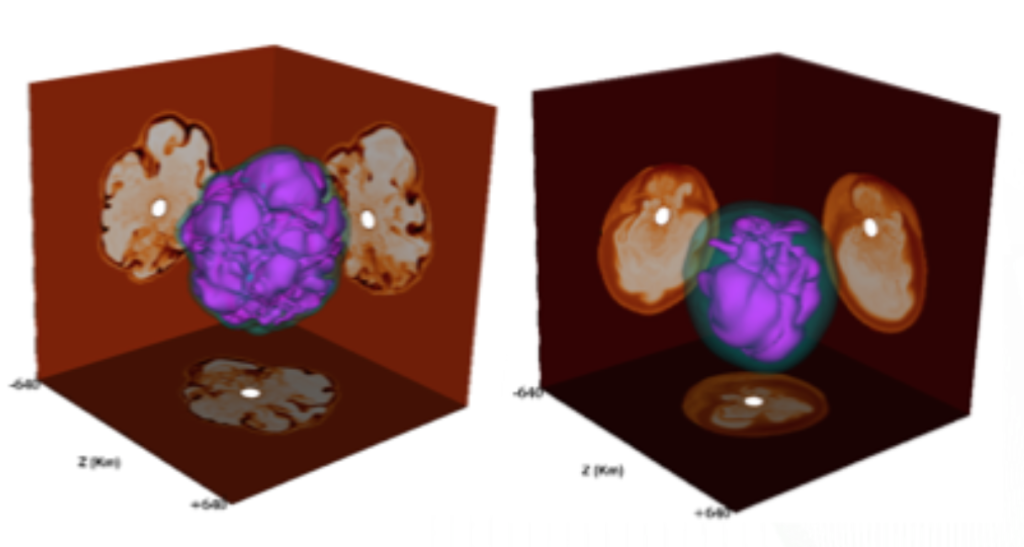
Two researchers in the ORNL Physics Division and the University of Tennessee (NICS) addressed the stochasticity and efficiency of core-collapse supernova explosions by using a highly simplified supernova model. With this model, they were able to run 160 simulations in 3D, by far the largest such ensemble, to explore a wide range of parameters describing core-collapse supernovae. Their model also allowed them to control whether convection or a Standing Accretion Shock Instability (SASI) was the dominant instability in the explosion. SASI-dominated runs are particularly susceptible to randomness or stochasticity, extending even to the qualitative outcome of whether a simulation results in an explosion or a dud. Their work found, for example, that the SASI-dominated runs exhibit only an increasing probability of explosion with increasing heating strength, undermining the paradigmatic notion of a critical luminosity that sharply separates explosions from duds. Because of this stochasticity, it is crucial that supernova modelers should run multiple realizations with each stellar progenitor and parameter settings. Given the historical lack of robustness of the neutrino-driven explosion mechanism, modelers should be open to progenitor properties and microphysics variations conducive to the SASI, which can do a significant amount of heavy lifting towards a successful explosion.

